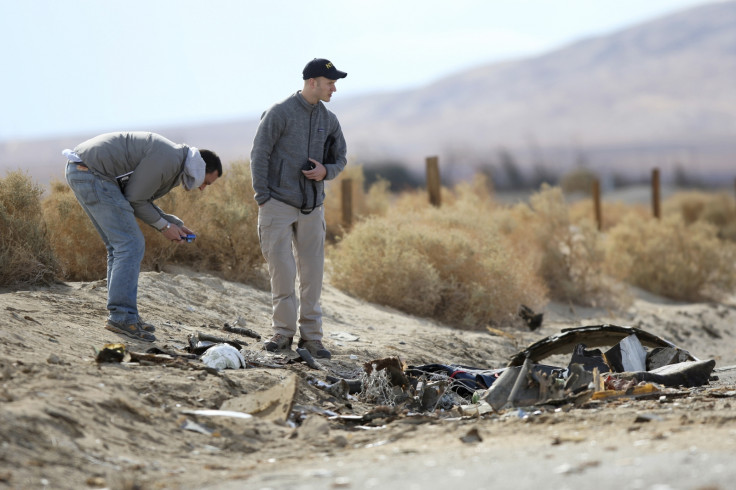Virgin Galactic SpaceShipTwo Crash Could be 'Pilot Error'

The National Transportation Safety Board (NTSB) has said that a pilot error may be to blame for the Virgin Galactic SpaceShipTwo crash, in which the craft's co-pilot was killed and the captain severely injured.
The aircraft crashed in the Mojave Desert, California, on Friday (31 October). US investigators believe that shortly before the crash the co-pilot, Michael Tyner Alsbury, changed the aero-dynamic controls, prematurely lifting the tail.
After inspecting video footage, NTSB acting chairman Christopher Hart said that one of the two leavers was unlocked when the vessel reached Mach. 1.0 - a measure of altitude.
According to the safety board, two leavers are supposed to be pulled when the vessel reaches Mach. 1.4, an action called "feathering" which is designed to slow the aircraft by lifting the tail.
However, if one lever was pulled prematurely at too low altitude, the aircraft would have lost momentum, sending it to the ground.
Hart told journalists: "Pilot error is a possibility," but added that "We're a long way from finding cause."
Investigators have said the probe into what caused the crash is likely to take upwards of a year.
The crash killed co-pilot Alsbury, 39, and severely injured the pilot 43-year-old Peter Siebold who managed to parachute to the ground.
The craft was about 45 minutes into a test flight flying at about 50,000ft when it experienced difficulties.
SpaceShipTwo spent more than three hours on the Mojave runway as mechanics assessed if the weather was right for flight.
It finally got the go-ahead at 9:19am local time.
The WhiteKnightTwo carrier aircraft, which carries SpaceShipTwo to release it at altitude, landed safely.
Approximately 700 would-be space tourists have paid $250,000 (£157,000) to travel into space on the Virgin Galactic service.
Virgin Galactic had said SpaceShipTwo's first trip to an outer-space altitude could have taken place before the end of the year.
© Copyright IBTimes 2025. All rights reserved.






















